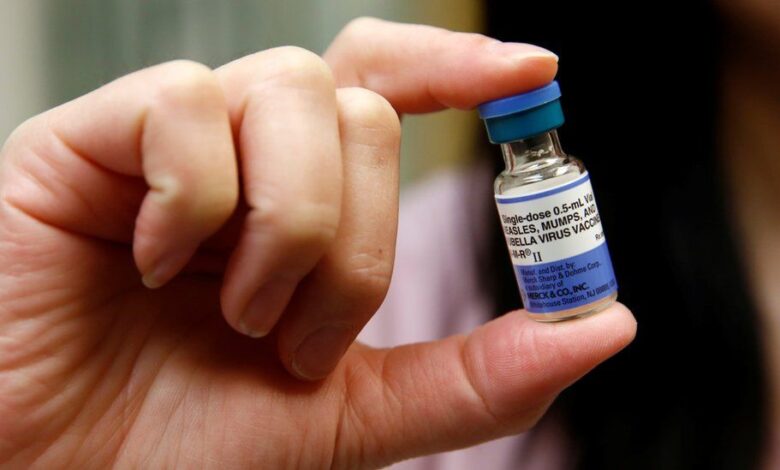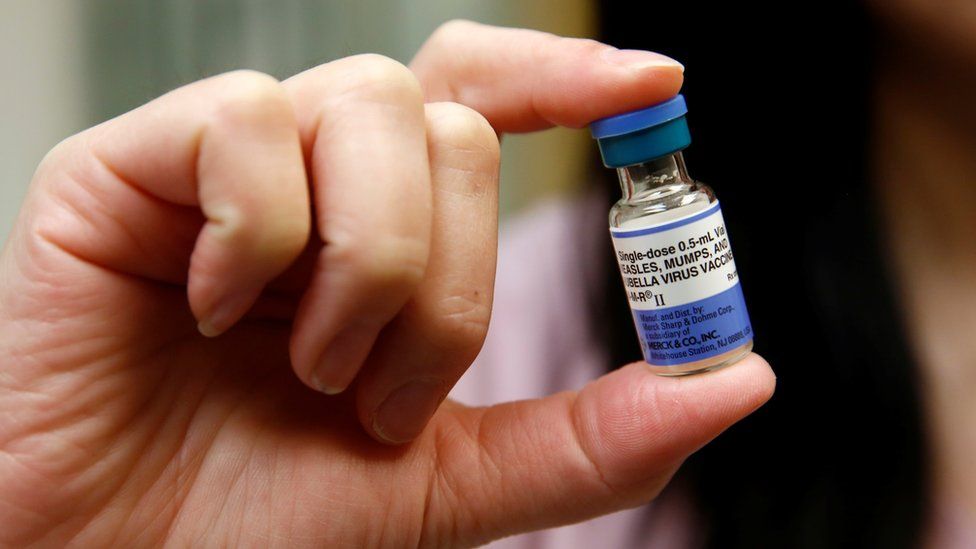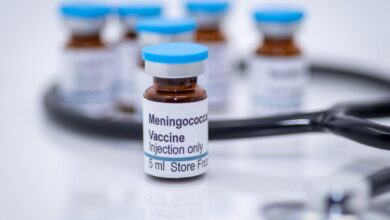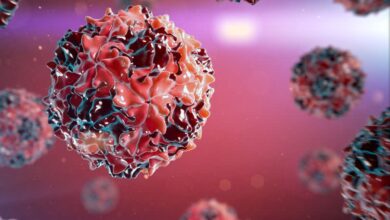
Why vaccinated people are getting mumps is a crucial question that demands a comprehensive understanding. This article delves into the complexities surrounding mumps, vaccine effectiveness, and potential reasons for breakthrough infections in previously vaccinated individuals.
Mumps, a contagious viral illness, presents with characteristic symptoms and transmission methods. Understanding the intricacies of the disease, alongside the mechanisms of the mumps vaccine, is vital to comprehending why some vaccinated individuals still contract the virus. This includes examining the effectiveness of different vaccine types, analyzing immune response variations, and exploring the impact of emerging mumps strains.
Understanding Mumps
Mumps, a viral infection, is often associated with childhood illnesses, but it can affect people of all ages. Understanding its characteristics, symptoms, and transmission methods is crucial for effective prevention and management. This post will delve into the specifics of mumps, helping you gain a clearer picture of this sometimes-overlooked disease.Mumps is a highly contagious viral disease primarily affecting the salivary glands.
This infection, typically encountered in childhood, is characterized by specific symptoms and a well-defined incubation period. Awareness of these details is key for timely diagnosis and appropriate treatment.
Definition of Mumps
Mumps is a contagious disease caused by the mumps virus. It primarily affects the salivary glands, leading to swelling and pain. The virus belongs to the Paramyxoviridae family and is spread through respiratory droplets.
Symptoms of Mumps
The typical symptoms of mumps often begin with a general feeling of illness, including fever, headache, and muscle aches. Subsequently, swelling of the salivary glands, particularly the parotid glands located in front of the ears, is a hallmark symptom. This swelling can cause pain and tenderness in the affected area. Other symptoms may include loss of appetite, tiredness, and in some cases, swelling of the testicles (orchitis) in males or the ovaries (oophoritis) in females.
Transmission Methods of Mumps
Mumps is highly contagious and spreads through direct contact with respiratory secretions, such as saliva, from an infected person. This can occur through coughing, sneezing, or even talking. Close contact with an infected individual increases the risk of transmission. The virus can survive for a short period outside the body, making surfaces potentially contaminated.
Incubation Period for Mumps
The incubation period for mumps, the time between infection and the appearance of symptoms, typically ranges from 12 to 25 days. However, the period can vary, and some individuals may be asymptomatic carriers, unknowingly spreading the virus. Understanding the incubation period is essential for contact tracing and preventing further spread.
Complications Associated with Mumps
While mumps is often a self-limiting illness, severe complications can arise. These complications include encephalitis (inflammation of the brain), meningitis (inflammation of the membranes surrounding the brain and spinal cord), and pancreatitis (inflammation of the pancreas). In rare cases, mumps can lead to deafness. The severity of complications varies significantly between individuals.
Comparison of Mumps Symptoms with Other Viral Infections
| Symptom | Mumps | Common Cold | Influenza |
|---|---|---|---|
| Fever | Often present, can be high | Mild to moderate | High, often sudden onset |
| Headache | Common | Possible | Common |
| Muscle Aches | Common | Possible | Common |
| Swollen Salivary Glands | Characteristic swelling, especially parotid glands | Absent | Absent |
| Loss of Appetite | Common | Possible | Possible |
| Swollen Testicles/Ovaries | Possible in males, rare in females | Absent | Absent |
This table provides a general comparison, and individual experiences can vary. Consulting a healthcare professional is crucial for accurate diagnosis and appropriate treatment.
Vaccination Effectiveness

Mumps vaccines have proven remarkably effective in preventing the spread and severity of mumps infections. Their widespread adoption has significantly contributed to the dramatic decline in mumps cases globally. Understanding how these vaccines work and their long-term protection is crucial for informed public health decisions.The effectiveness of mumps vaccines stems from their ability to induce an immune response in the body without causing the actual disease.
This is achieved through the introduction of a weakened or inactivated form of the mumps virus, or specific mumps virus proteins, into the body. This exposure triggers the immune system to recognize and develop defenses against the actual mumps virus.
Sometimes, even though someone’s vaccinated against mumps, they can still get it. It’s a bit like how some babies might still need a little extra help learning to talk, even if they’re surrounded by language. Just as interacting with a baby in a way that’s easy to understand, like using baby talk, can actually boost their language development having a conversation in baby talk can speed up infants language development , the vaccine might not completely prevent every single case of mumps, especially in certain situations.
It’s a fascinating area of study, and there’s still more to learn about immunity and disease transmission.
Mechanisms of Action
Mumps vaccines utilize various mechanisms to stimulate immunity. The most common strategy involves introducing a weakened (attenuated) or inactivated form of the mumps virus. This attenuated virus, while incapable of causing disease, can still stimulate the immune system to produce antibodies and T-cells that specifically target the mumps virus. Alternatively, some vaccines utilize only specific proteins of the mumps virus, which can also effectively trigger an immune response.
This approach reduces the risk of the vaccine itself causing the disease.
Reduction in Mumps Cases
Extensive vaccination programs have led to a significant decrease in mumps cases globally. The effectiveness of vaccination is clearly demonstrated by the marked decline in mumps outbreaks in countries with high vaccination coverage. This reduced incidence translates to fewer hospitalizations, complications, and long-term health problems. For example, in the United States, where vaccination rates are high, mumps outbreaks are now rare compared to previous decades.
Long-Term Protection
Mumps vaccines generally provide long-lasting protection. The immune response generated by vaccination typically offers a high degree of protection against mumps infection for many years, often for a lifetime. However, like other vaccines, the degree of long-term protection can vary slightly depending on the specific vaccine type and individual factors. Booster shots might be recommended in specific situations, such as outbreaks or exposure to the virus.
Types of Mumps Vaccines and Efficacy
| Vaccine Type | Efficacy | Notes |
|---|---|---|
| Live attenuated mumps vaccine | Generally considered highly effective, with reported efficacy rates exceeding 95% in preventing mumps infection. | This type of vaccine uses a weakened form of the virus, stimulating a robust immune response. |
| Inactivated mumps vaccine | Efficacy is generally high, though sometimes lower than live attenuated vaccines. | This type of vaccine uses a deactivated form of the virus, and is less commonly used. |
| Combination mumps, measles, and rubella (MMR) vaccine | The MMR vaccine, containing mumps, measles, and rubella vaccines, offers protection against all three diseases, with efficacy rates generally similar to the mumps vaccine alone. | This combined approach is a common practice, simplifying vaccination schedules. |
The table above summarizes the different types of mumps vaccines and their efficacy rates. Data on efficacy is often gathered through clinical trials and long-term observational studies, showing the effectiveness of these vaccines in preventing the disease.
Potential Reasons for Mumps in Vaccinated Individuals
While mumps vaccination is highly effective, cases of mumps in vaccinated individuals do occur. Understanding the reasons behind these “breakthrough” infections is crucial for public health strategies and maintaining confidence in vaccination programs. This insight helps us refine our approach to preventing and controlling mumps outbreaks.
Factors Contributing to Breakthrough Infections
Breakthrough infections, where individuals develop mumps despite vaccination, are a complex phenomenon. Several factors can influence the effectiveness of the vaccine in preventing infection. The specific immune response in each individual varies, and this variability plays a significant role in whether or not a vaccinated person contracts mumps.
Weakened Immune Systems
Individuals with weakened immune systems, due to underlying health conditions or immunosuppressive treatments, may not mount a robust immune response to the vaccine. This can leave them susceptible to mumps, even after vaccination. Conditions like HIV/AIDS, cancer treatments, or organ transplantation can compromise the immune system’s ability to effectively fight off mumps infection.
While vaccination significantly reduces mumps risk, it’s not a guarantee. Sometimes, even vaccinated individuals contract the virus, likely due to weakened immunity or the specific strain circulating. This mirrors the FDA’s recent cautionary stance on teething medications, highlighting how even preventative measures aren’t foolproof and how crucial ongoing research is to fully understand immunity and potential side effects.
Understanding why vaccinated people are getting mumps requires a nuanced look at the complexities of viral transmission and individual responses to vaccines, just as the FDA’s warning about teething meds emphasizes the need for ongoing safety evaluation. Ultimately, vaccination remains a powerful tool, but understanding its limitations is vital. why fda warning against teething meds offers a fascinating perspective on this.
Inadequate Immune Responses
Even in individuals with healthy immune systems, the vaccine’s effectiveness can be compromised by several factors. A suboptimal immune response, perhaps due to an individual’s genetic predisposition or a concurrent infection, can lead to a failure to develop sufficient immunity. In some cases, the specific strain of mumps virus encountered may also differ from the strain targeted by the vaccine, reducing the vaccine’s effectiveness.
Vaccine Effectiveness and Unvaccinated Individuals
The likelihood of mumps infection is significantly lower in vaccinated individuals compared to unvaccinated individuals. While breakthrough infections can occur, the protective effect of vaccination remains substantial. The protection afforded by vaccination reduces the risk of infection, transmission, and complications. Vaccination strategies aim to achieve herd immunity, which protects vulnerable populations, including those who cannot be vaccinated.
Therefore, the impact of vaccination on controlling mumps is substantial.
Impact of Co-infections
Co-infections with other viruses or bacteria can negatively affect the immune system’s ability to respond to vaccines. For instance, a concurrent respiratory infection can divert immune resources, potentially hindering the immune response to the mumps vaccine. This interaction can reduce the efficacy of the vaccine, making the individual more susceptible to mumps infection.
Factors Contributing to Mumps in Vaccinated Individuals
| Factor | Explanation |
|---|---|
| Weakened Immune System | Underlying health conditions (e.g., HIV/AIDS, cancer treatments) or immunosuppressive medications can impair the immune response to vaccines. |
| Inadequate Immune Response | Individual variations in immune response, genetic predisposition, or concurrent infections can lead to insufficient immunity development. |
| Virus Strain Differences | The specific strain of mumps virus encountered may differ from the strain targeted by the vaccine, impacting vaccine effectiveness. |
| Co-infections | Concurrent infections can divert immune resources, hindering the immune response to the vaccine and increasing susceptibility to mumps. |
| Age | Immune response may be weaker in certain age groups, particularly those receiving the first dose of the vaccine. |
Variations in Vaccine Response
The mumps vaccine is generally highly effective, but individual responses to vaccination can vary. Understanding these variations is crucial for public health strategies, particularly in identifying populations who might benefit from additional measures. Factors influencing vaccine effectiveness are not always readily apparent, but are significant in assessing individual risk and community immunity.
Variability in Immune Responses
The human immune system is complex and diverse, leading to different levels of antibody production and cellular immunity after vaccination. Genetic predispositions, environmental factors, and concurrent health conditions can all influence the strength of the immune response. Some individuals might mount a robust response, generating high levels of antibodies that provide long-lasting protection, while others may exhibit a weaker response, leading to lower or transient protection.
This variability necessitates considering a range of responses, not just an average effectiveness rate.
Factors Affecting Vaccine Effectiveness
Several factors play a critical role in how well an individual responds to the mumps vaccine. Age, for instance, can influence the immune response. Young children may not develop the same robust immune response as older individuals. Health status is also significant; individuals with weakened immune systems, such as those undergoing chemotherapy or with underlying conditions like malnutrition, may not respond as effectively to the vaccine.
Prior exposure to the mumps virus, either through natural infection or prior vaccination, can also affect the vaccine’s effectiveness. Pre-existing conditions, such as autoimmune disorders, can also impact the immune response.
Genetic Factors in Vaccine Response
Genetic variations in genes related to immune function can significantly impact an individual’s response to the mumps vaccine. These variations can affect the production of antibodies, the activation of immune cells, and the overall strength of the immune response. Research continues to uncover specific genes that contribute to the variability in vaccine responses.
So, why are vaccinated people still getting mumps? It’s a bit like how prediabetes can develop into type 2 diabetes if you don’t take steps to manage your blood sugar levels; prediabetes can develop into type 2 diabetes how to reduce your risk. The vaccine might not always offer complete protection, and certain factors can still put you at risk.
This is important to remember when considering the complexities of immunity and public health.
Table: Factors Affecting Mumps Vaccine Effectiveness, Why vaccinated people are getting mumps
| Factor | Description | Effect on Vaccine Effectiveness |
|---|---|---|
| Age | Children and adolescents may have a less robust response compared to adults. | Potentially reduced effectiveness in younger age groups. |
| Health Status | Individuals with weakened immune systems (e.g., due to illness or medication) may not respond as effectively. | Reduced effectiveness, potential need for booster doses or alternative approaches. |
| Prior Exposure | Prior natural infection or vaccination can influence the response to subsequent vaccination. | Potentially reduced need for subsequent vaccination or increased effectiveness in cases with prior exposure. |
| Genetic Factors | Variations in genes related to immune function can affect antibody production and cellular immunity. | Variability in response, requiring further research and potentially personalized approaches. |
| Concurrent Conditions | Underlying health conditions (e.g., autoimmune diseases) can affect the immune response. | Potential for reduced effectiveness, requiring careful consideration and potential adjustments to vaccination strategies. |
Importance of Booster Doses
Booster doses of the mumps vaccine can be crucial in maintaining immunity over time. The immune response to the initial vaccination may wane over time, making booster doses necessary to maintain protection against mumps. The need for booster doses and the optimal timing are areas of ongoing research and are dependent on the individual’s immune response and other factors.
Emerging Variants and Mumps

The mumps virus, while largely controlled by vaccination, continues to evolve. Understanding how these evolving strains impact vaccine effectiveness is crucial for maintaining public health. Emerging variants could potentially alter the virus’s interaction with the immune system, leading to decreased vaccine efficacy or even breakthrough infections in previously vaccinated individuals.Emerging mumps strains can potentially affect the effectiveness of current vaccines.
This impact hinges on the degree to which the mutations in these strains alter the viral proteins recognized by the immune system. If the mutations significantly alter the target proteins, the antibodies generated by vaccination might not effectively neutralize the new strain. Understanding the specific changes in these emerging strains and their impact on immune response is vital to anticipate and address potential issues in vaccination strategies.
Potential Impact on Vaccine Effectiveness
Emerging mumps strains can potentially evade the immune response elicited by existing vaccines. This could manifest in several ways, including reduced neutralization by vaccine-induced antibodies, altered viral entry mechanisms, or changes in the viral proteins recognized by the immune system. These changes in the virus’s structure and function could impact the effectiveness of the vaccine in preventing infection.
Mechanisms of Immune Evasion
Mutations in the mumps virus could affect the key viral proteins that are targeted by the immune response generated by the vaccine. These proteins, such as the fusion protein, are crucial for viral entry and replication. If mutations in these proteins alter their structure, antibodies elicited by the vaccine may no longer be able to effectively bind and neutralize the virus.
Recent Research on Mumps Virus Evolution
Recent research utilizing genomic sequencing has revealed ongoing evolution of the mumps virus. Scientists are meticulously tracking mutations in viral genes, identifying specific changes that might impact vaccine effectiveness. This research helps predict potential changes in the virus’s characteristics and informs strategies for vaccine development and public health interventions. For instance, studies have shown how specific mutations in the hemagglutinin protein can alter the virus’s ability to bind to host cells.
Table Comparing Mumps Strains
| Strain | Key Characteristics | Potential Impact on Vaccine Effectiveness |
|---|---|---|
| Strain X | Mutations in fusion protein, reduced antibody binding | Potentially reduced effectiveness; increased risk of breakthrough infections |
| Strain Y | Mutations in the attachment protein, altered cell entry | Potentially reduced effectiveness; increased risk of breakthrough infections in susceptible individuals |
| Wild-type Strain | Reference strain; no significant mutations | High effectiveness of current vaccines; lower risk of breakthrough infections |
Strategies for Tracking Mumps Virus Evolution
Global surveillance programs are crucial for monitoring the evolution of mumps viruses. These programs involve collecting samples from infected individuals in various locations and performing genomic sequencing to identify mutations. The data generated helps track the spread of new strains and assess their potential impact on vaccine effectiveness. This ongoing monitoring allows for adaptation of public health strategies as needed.
A key aspect of these programs is international collaboration, allowing for the identification of emerging trends and early detection of new variants. This data-driven approach enables public health officials to develop targeted interventions and vaccine strategies.
Monitoring and Reporting: Why Vaccinated People Are Getting Mumps
Tracking mumps cases, both in vaccinated and unvaccinated individuals, is crucial for understanding the disease’s spread, identifying potential outbreaks, and evaluating the effectiveness of vaccination strategies. Comprehensive monitoring relies on robust reporting systems and careful analysis of the data gathered. This allows public health officials to implement targeted interventions and ultimately prevent further transmission.
Methods for Monitoring Mumps Cases
Effective mumps monitoring involves a multi-faceted approach. Public health agencies utilize surveillance systems that collect data from various sources, including hospitals, clinics, and laboratories. These systems often employ standardized case definitions to ensure consistent data collection and analysis across different regions. The definitions usually specify clinical symptoms, laboratory confirmation (such as serological testing), and epidemiological links. This standardization facilitates comparison and trend analysis across time and geographic locations.
Importance of Reporting Mumps Cases
Accurate and timely reporting of mumps cases is essential for public health interventions. Reporting allows public health authorities to identify potential outbreaks promptly. Early detection enables rapid response measures, such as contact tracing, isolation protocols, and vaccination campaigns, to limit the spread of the virus. This proactive approach can prevent the development of larger outbreaks, especially in susceptible populations.
The data gathered also aids in understanding the effectiveness of public health measures and the factors contributing to mumps transmission.
Data Visualization for Analyzing Mumps Cases
Visualizing mumps case data is instrumental in identifying patterns and trends. Different types of graphs and charts can effectively represent this information. For instance, a line graph can illustrate the number of cases over time, allowing public health officials to detect spikes or declines in incidence. Geographic maps can pinpoint areas experiencing higher rates of mumps cases, highlighting potential clusters or geographic disparities.
These visualizations facilitate rapid identification of potential outbreaks and guide targeted interventions.
Reporting Mumps Cases: Steps and Resources
Systematic reporting procedures ensure accuracy and efficiency in the process. The steps generally include case identification, data collection, validation, submission to the relevant public health authority, and eventual data analysis.
| Step | Description |
|---|---|
| Case Identification | Healthcare providers identify patients with suspected mumps based on clinical presentation. |
| Data Collection | Information such as patient demographics, symptoms onset, and laboratory confirmation results are meticulously documented. |
| Validation | Collected data is validated for accuracy and completeness by designated personnel within the public health system. |
| Submission | Validated data is submitted to the appropriate public health authority, often using online portals or designated forms. |
| Analysis | Public health authorities analyze the submitted data to identify trends, potential outbreaks, and areas requiring further investigation. |
Available Resources for Reporting Mumps Cases
Public health departments often provide resources and support for reporting mumps cases. These resources can include online portals, dedicated phone lines, and standardized reporting forms. Furthermore, online databases and epidemiological tools can help track mumps cases and analyze trends. The exact resources will vary by jurisdiction, so consulting the local public health department is recommended for specific details.
Last Point
In conclusion, while mumps vaccines are highly effective, breakthrough infections can occur. Factors like individual immune responses, co-infections, and emerging viral variants play crucial roles. Continued monitoring, research, and public health reporting are essential to understand and mitigate the risk of mumps, even in vaccinated populations. This ensures that preventative measures remain robust in the face of evolving viral challenges.





